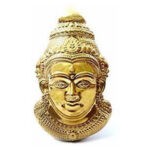27 beads Rudraksha for chanting
A Rudraksha sumarni rosary, also known as a Rudraksha mala, is a string of prayer beads commonly used for meditation and chanting (jaap) in Hinduism. Rudraksha beads are seeds from the Rudraksha tree and are considered sacred in Hindu culture. They are believed to have spiritual and healing properties.
To use a Rudraksha sumarni rosary for jaap, follow these steps:
- Selecting the Mala: Choose a Rudraksha mala with a suitable number of beads for your chanting practice. Traditional Rudraksha malas typically have 108 beads, although there are variations with different numbers.
- Setting an Intention: Before beginning your jaap, set an intention or dedicate your practice to a specific purpose, such as spiritual growth, peace, or well-being.
- Find a Quiet Space: Sit in a comfortable and quiet place where you can focus on your meditation practice without distractions.
- Hold the Mala: Hold the Rudraksha mala in your right hand, draped over your middle finger, with the thumb gently touching the bead adjacent to the guru bead (the largest bead on the mala).
- Chanting Mantra: Start chanting your chosen mantra or the name of the deity you wish to invoke. With each repetition of the mantra, move to the next bead on the mala, using your thumb to count the beads. Repeat this process for each bead on the mala, ending back at the guru bead.
- Focus and Intention: Maintain focus on your mantra and the intention you’ve set throughout your chanting practice. Let go of distractions and immerse yourself in the rhythm of your breath and the repetition of the mantra.
- Complete the Practice: Once you have completed the desired number of repetitions or the time you’ve allotted for your meditation, pause for a moment to reflect on your experience and express gratitude for the practice.
- Care for Your Mala: After each use, store your Rudraksha mala in a clean and sacred place. Avoid placing it on the ground or in unclean areas. Some practitioners also like to cleanse their malas regularly with incense smoke or by placing them in sunlight.






